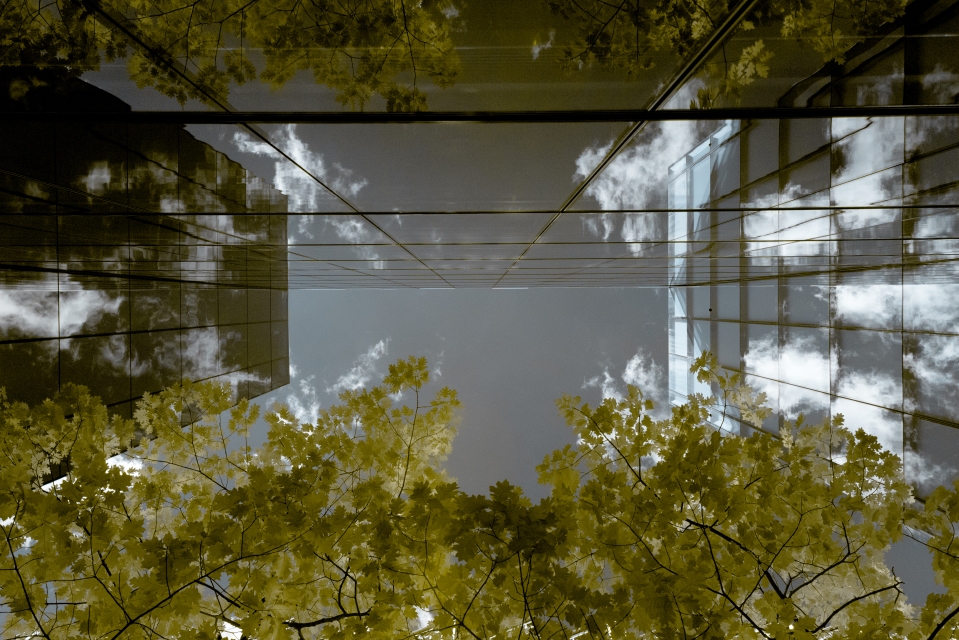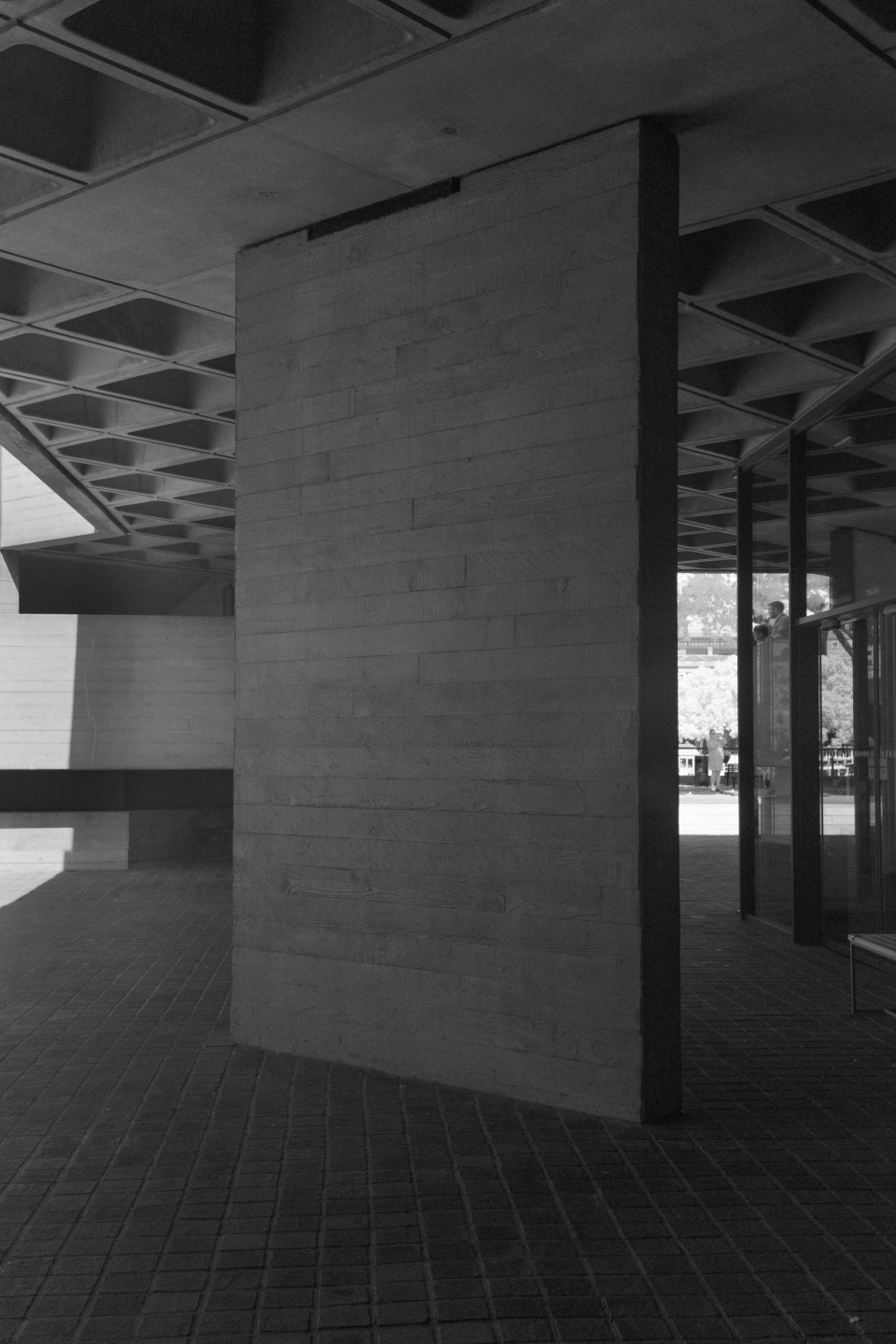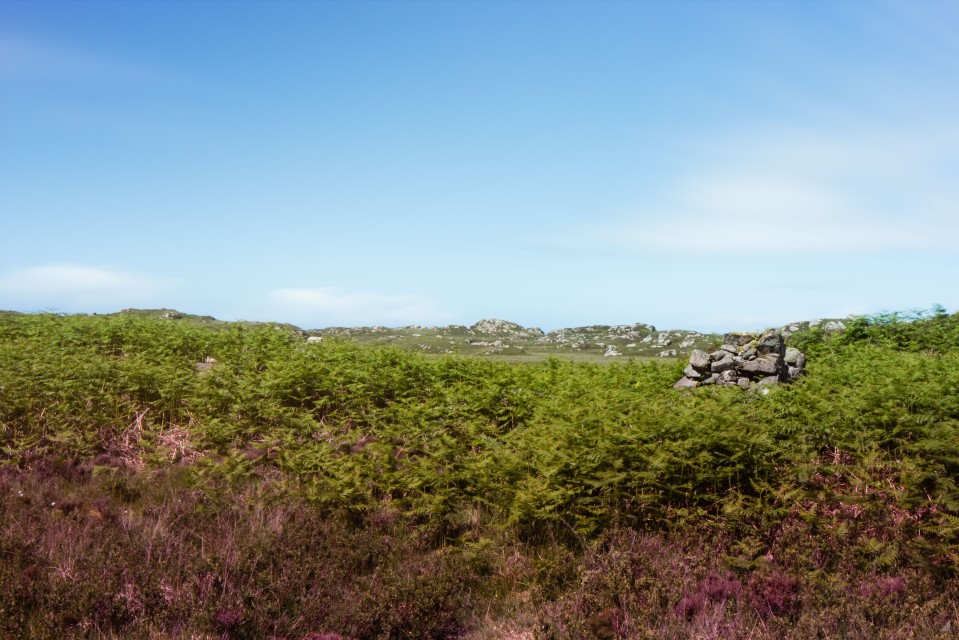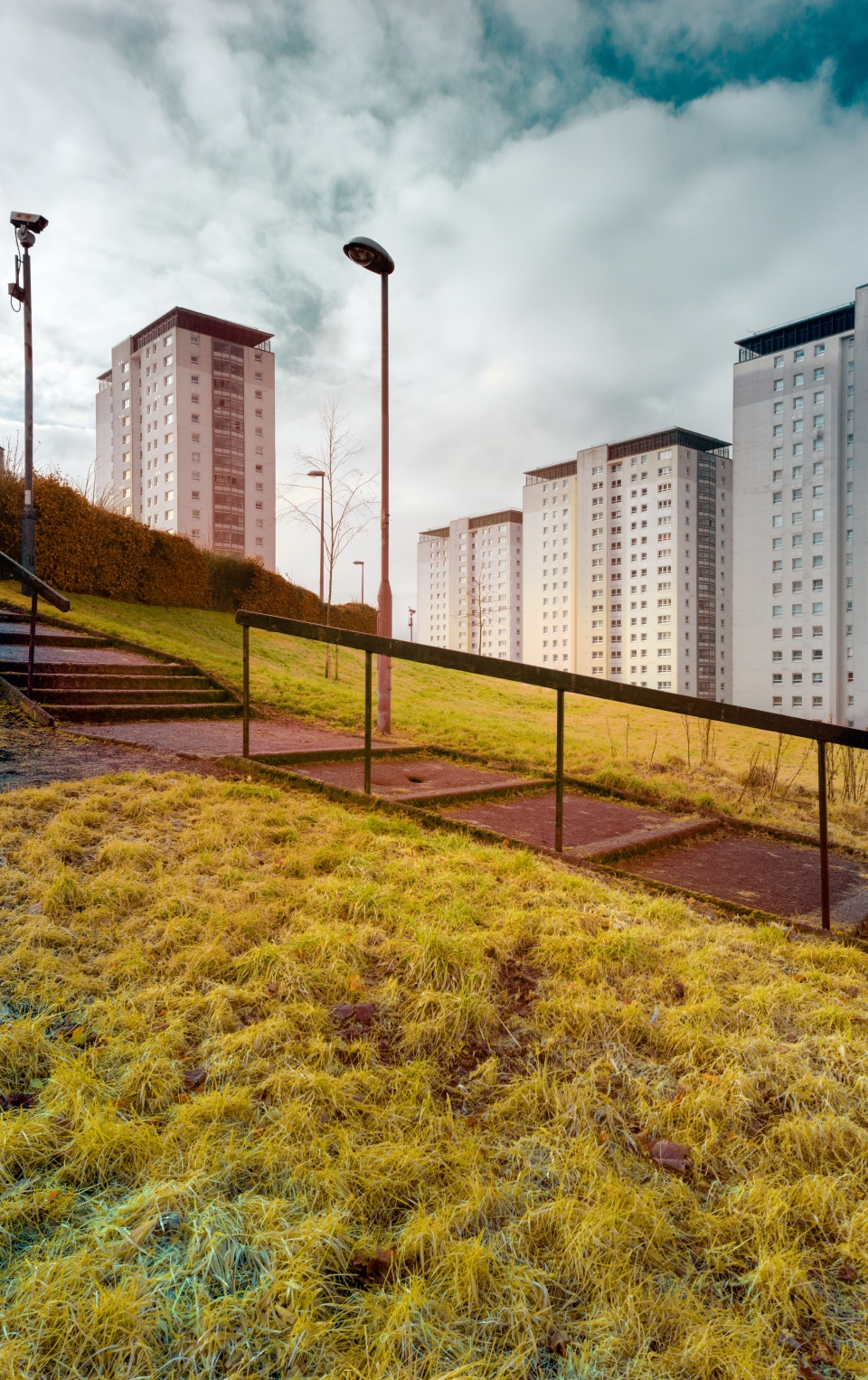In photographic intent I endeavor to reach an embodiment of otherness.
In purpose, I try – more often than not failing – to convey no message, only asking for consideration of different perspectives on the societal themes I explore. It starts with the viewer listening to the dialogue in the image, a simple invitation to join in. My images are boundaries between different points of view. They are visualizations that accommodate differing information spaces, each of these spaces a different existence. Visually I try to speak of ‘grace’, through a gaze of acceptance that strives to free itself from judgment, power and exploitation. But neither my thoughts nor my images are ever free of these burdens. The mask of acceptance that I wear creates an acknowledgment of difference. An apparent objectivity exists only in the presence of its companion subjectivity.

Fig. 1 Gordon Sutherland, 2018, Untitled Work in Progress. [Unpublished Digital Infra-red Photograph IR 590]
In the above image of More London (Foster & Partners) – from an unpublished mini series realized over one morning in summer 2018 – my intent was to visualise the dialogue between nature and the built environment in the context of global capitalism (Fig.1). The subject matter, perspective and compositional elements of the image release it from the power struggle between nature and capitalist development, although the overall series has a more dystopian, linear narrative on exploitation of resources in a non-circular economy. This image emerges, naturally, at the mid-point of the narrative.
I work at the crossover between architectural photography, social documentary and fine-art photography exploring buildings and infrastructure as an art-motif for awakening social conscience. My approach is influenced by many photographers, however the two most influential are James Welling, in particular his use of colour theory in the series Glass House, and Hélène Binet, from her embodiment of religious – arguably masonic – and cosmic motifs and references in her photographic oeuvre. The resonance of these works on my personal, indoctrinated world views emerges throughout my photographic practice, much of which is highly autobiographical.

Fig. 2 Gordon Sutherland, 2018, Untitled Work in Progress, 2018 [Unpublished Digital Infra-red Photograph IR 590]

Fig. 3 Gordon Sutherland, 2018, Agora Simone Veil & the Willy Brandt Building, European Parliament Complex, Brussels. [Unpublished Digital Blended Spectra Photograph]

Fig. 4 Gordon Sutherland, 2017, Braigh Craobhach [75 x 50 cm (30 x 20 in.) fine-art giclée inkjet pigment print] (Private Collection, Athens)

Fig. 5 Gordon Sutherland, 2018, Knightswood Flats, Glasgow [60 x 90 cm (23.6 x 35.4 in.) fine-art giclée inkjet pigment print] (Private Collection, Brussels)
The photographic journey to here has been a development of self-expression coupled with a conviction for dialogue and acceptance without judgment. My most recent project, this time I’m voting, constituted a visible departure from that intent, with less subtle messaging. At any rate, the cultural and personal context cannot be entirely separated unless the photographer is a machine – and even that is open to debate. The image, or the photographer, remains a burden. The one does not escape the other.
The exploration of my visual voice continues through extension of Guattarian philosophy at today’s confluence of the environmental crisis and the information age. By exploring critical contextual theory and contemporary visual culture I am preparing for the next stage in informing my degree major project through exploration of surveillance and data flows in digitally connected cultures.
This exploration emerges ahead of a photography project this coming summer in Tokyo as part of the Surfaces and Strategies module.
For this reason my starting point for exploration of context and visual culture is art and religion in Japan, building on the perspectives and photographic practice already explored from my very own, personal western perspective.
Sources:
Sutherland, G. (2017) Another Path. [Online] Available at http://www.irrationalangle.com/another-path/ [Accessed 7 February 2019]
Sutherland, G. (2018) Looking for Daylight. [Online] Available at http://www.irrationalangle.com/looking-for-daylight/ [Accessed 7 February 2019]
